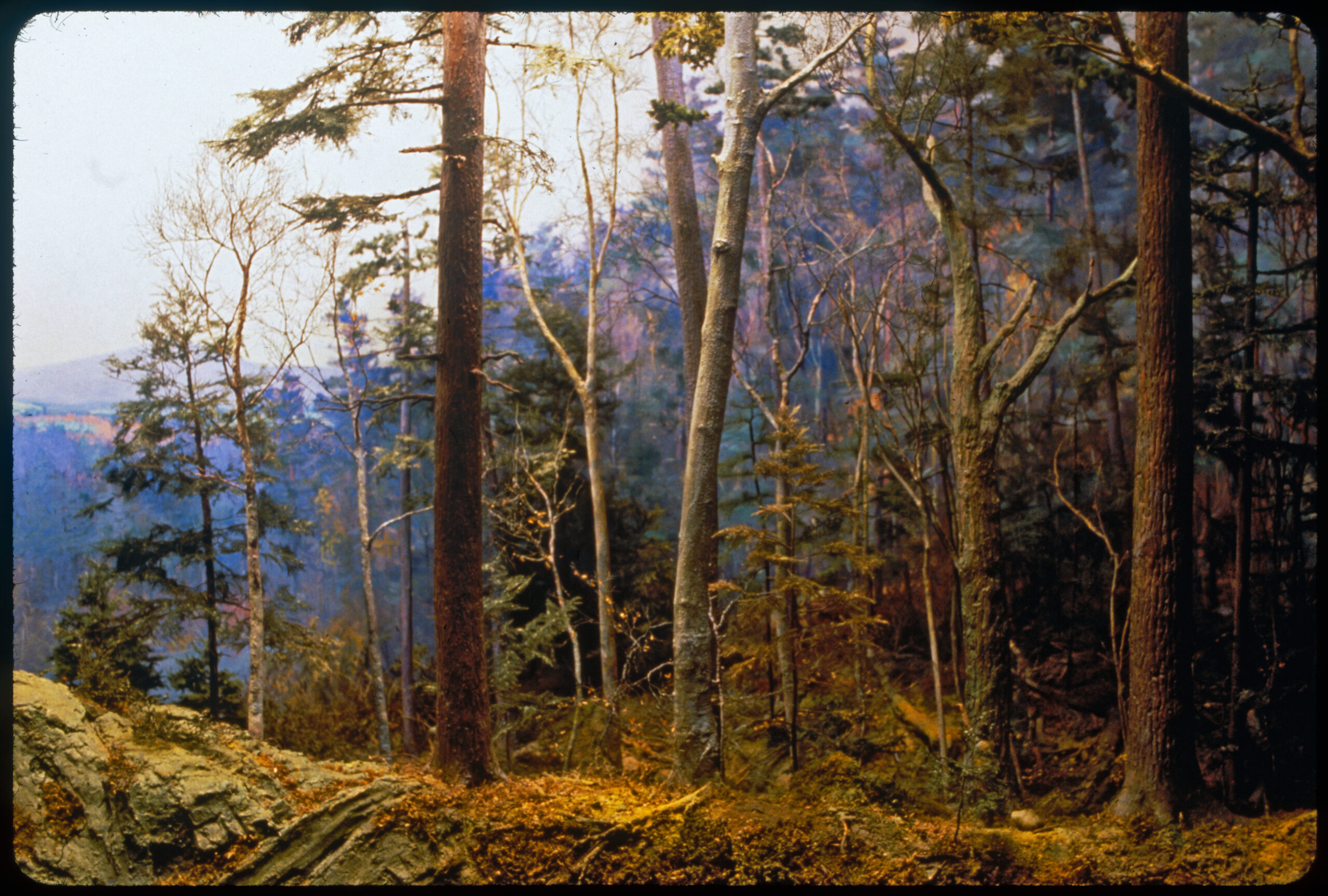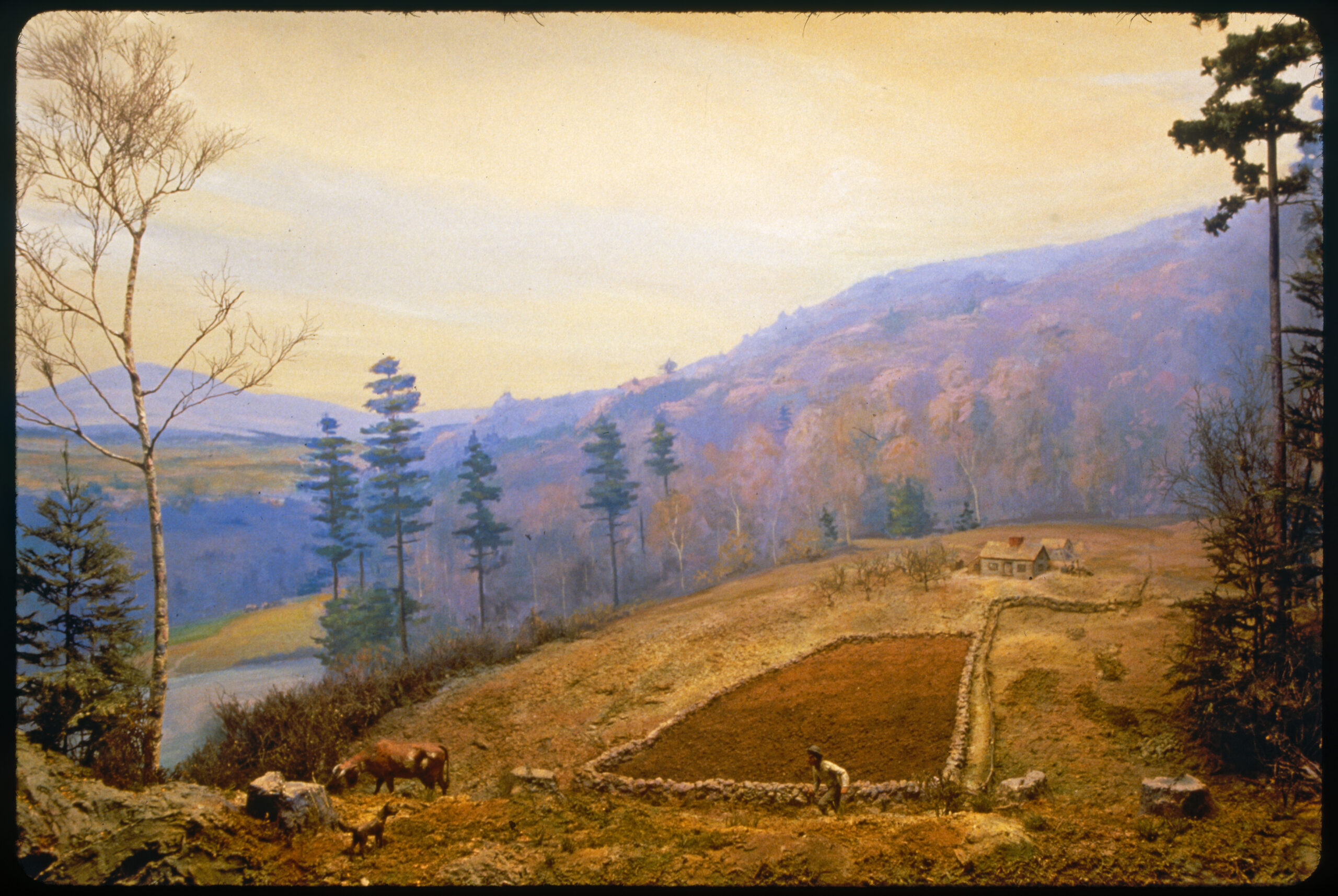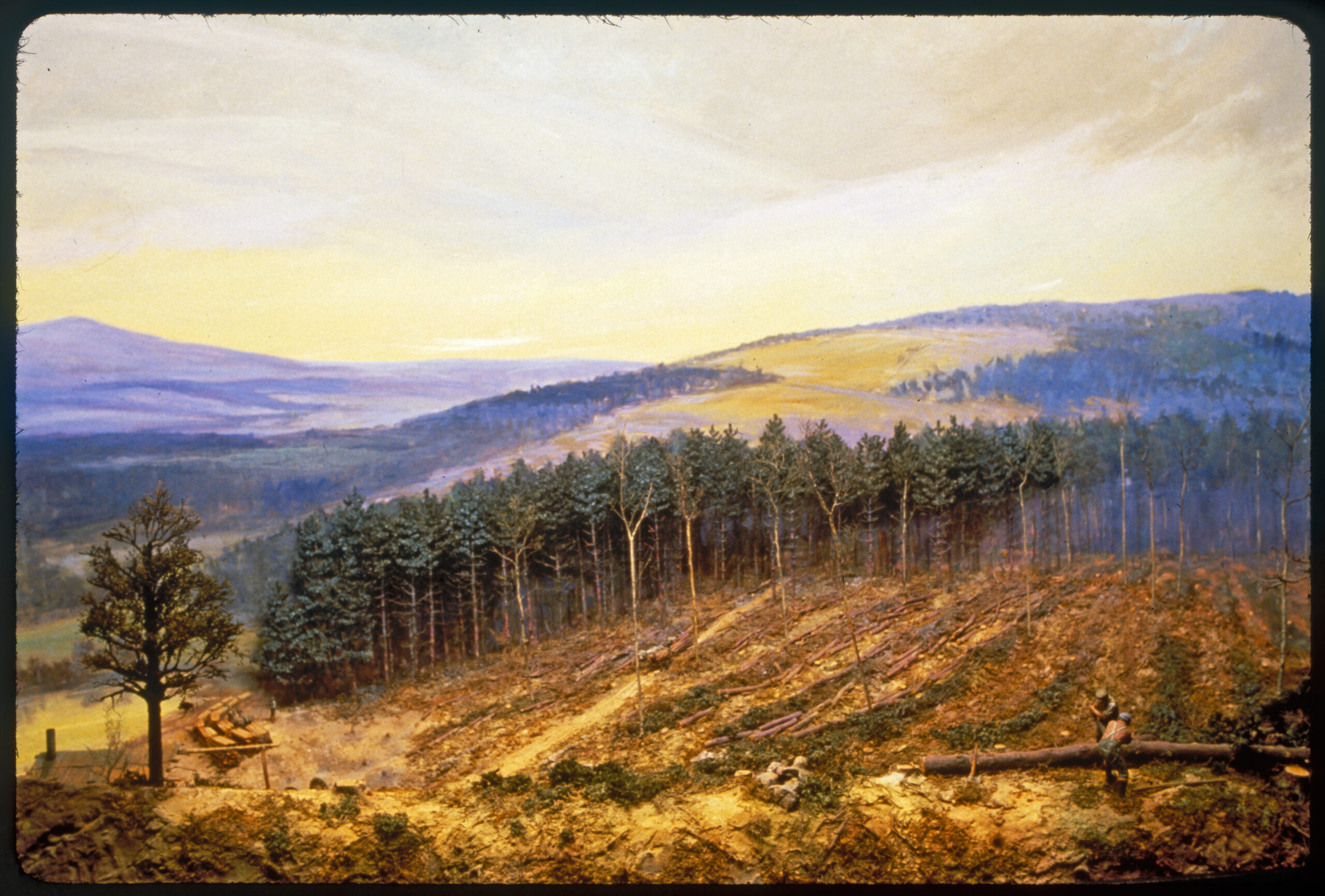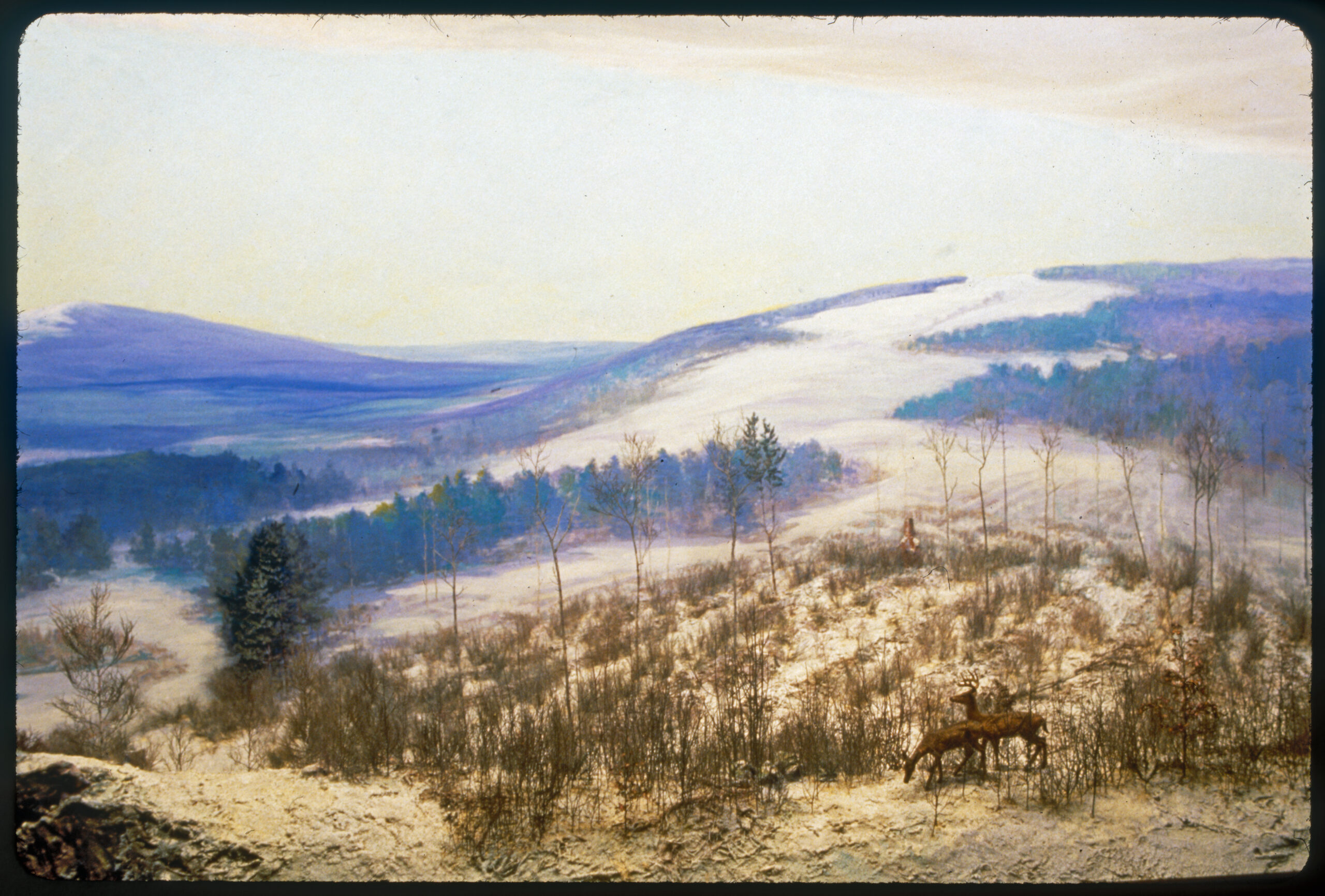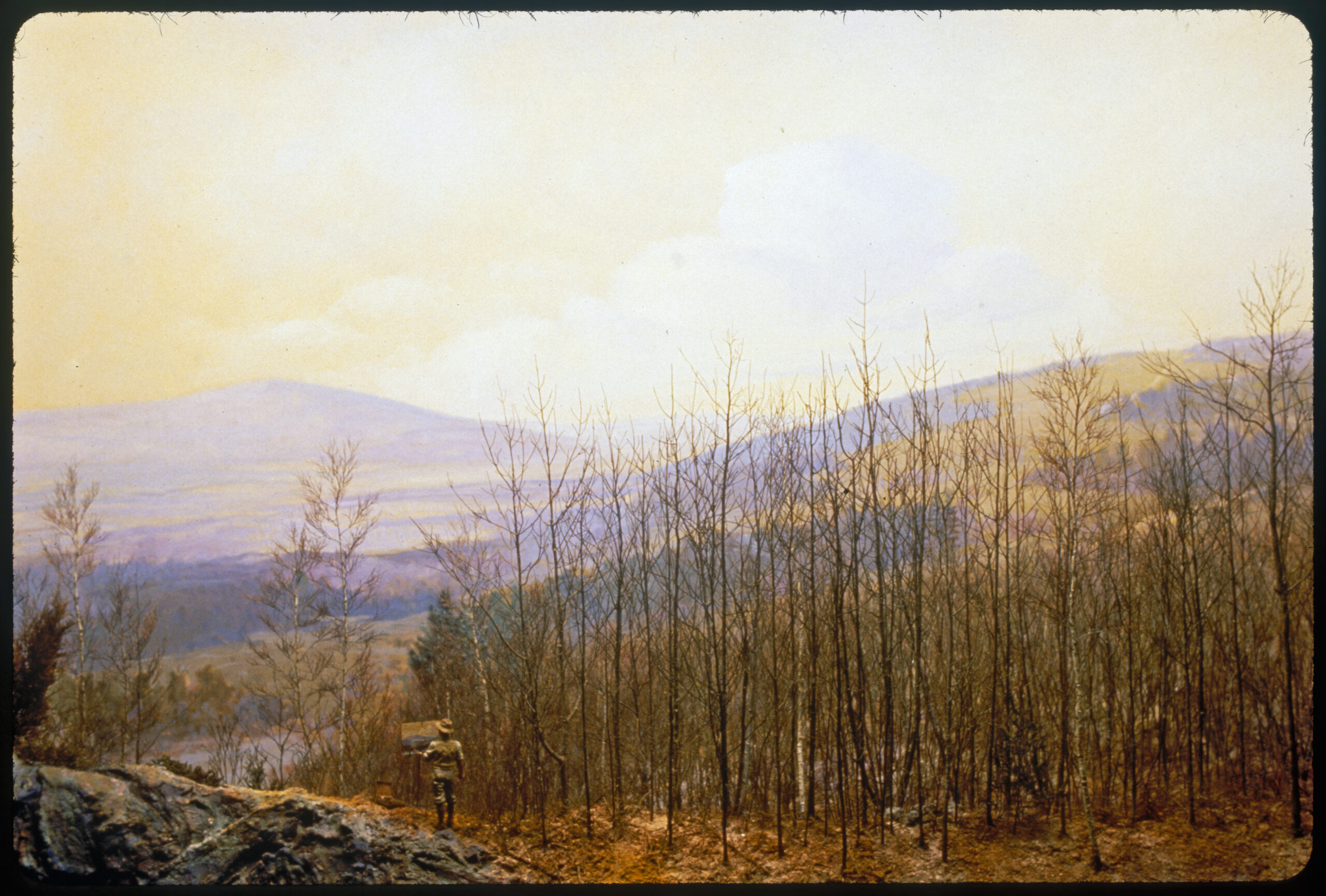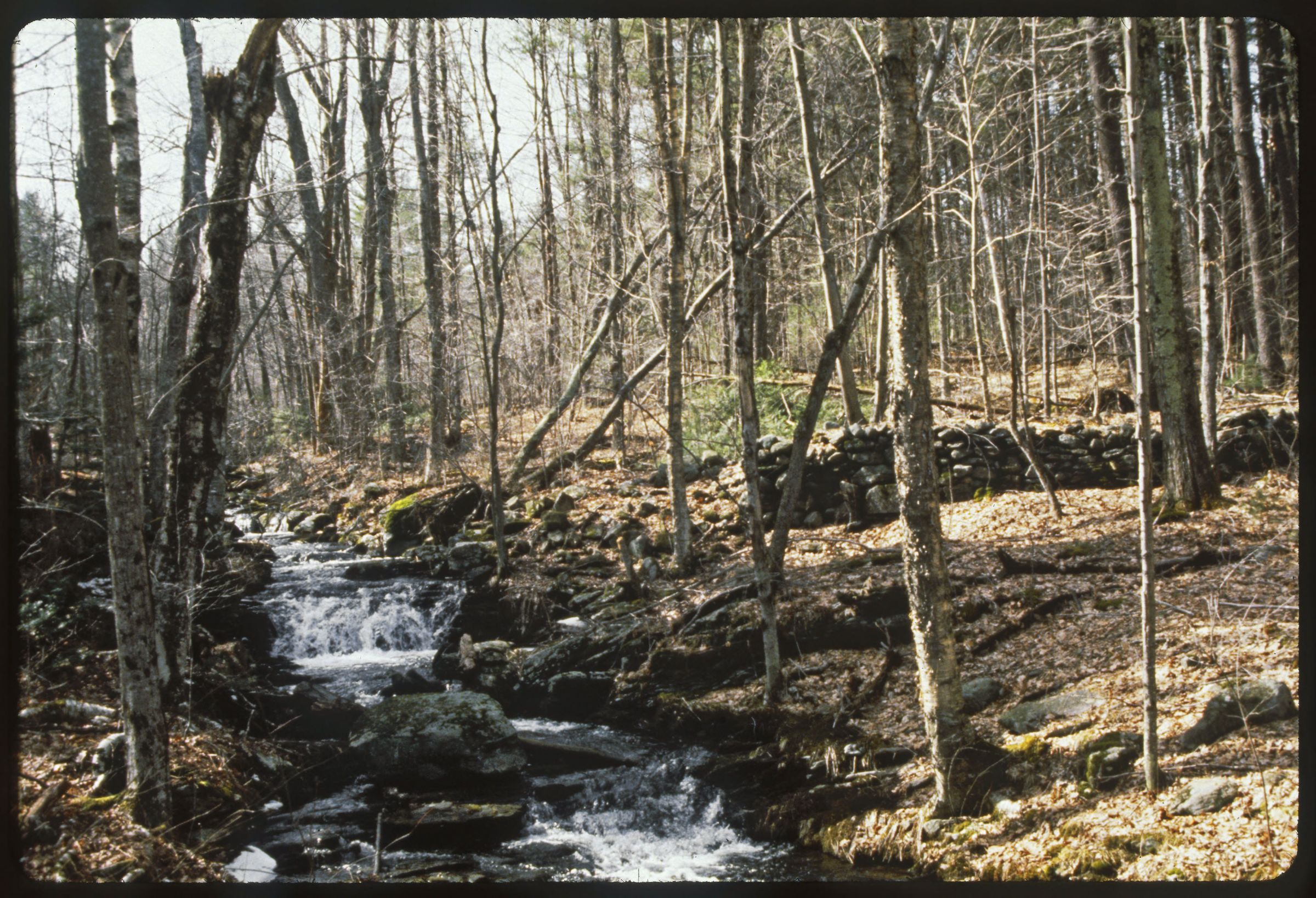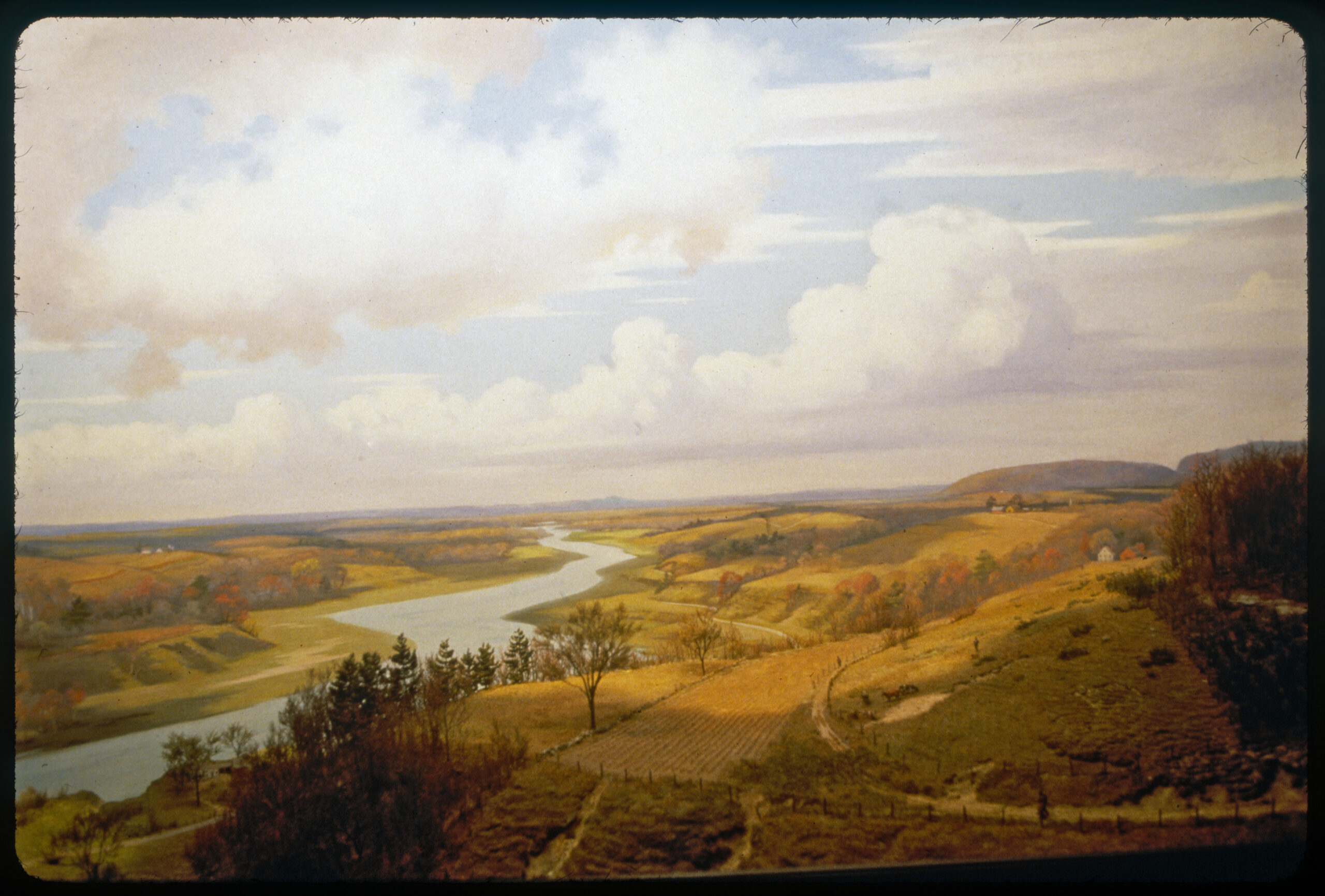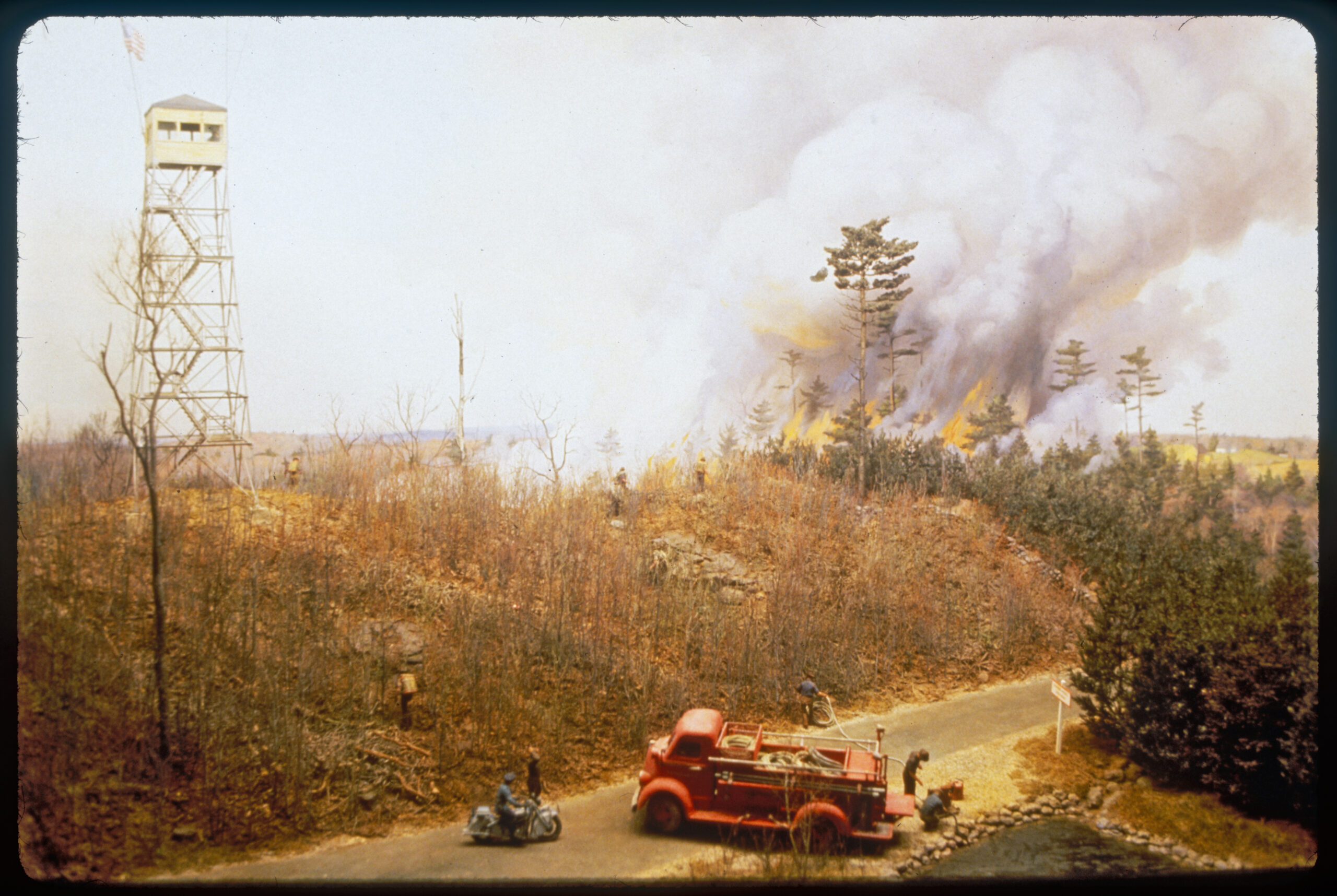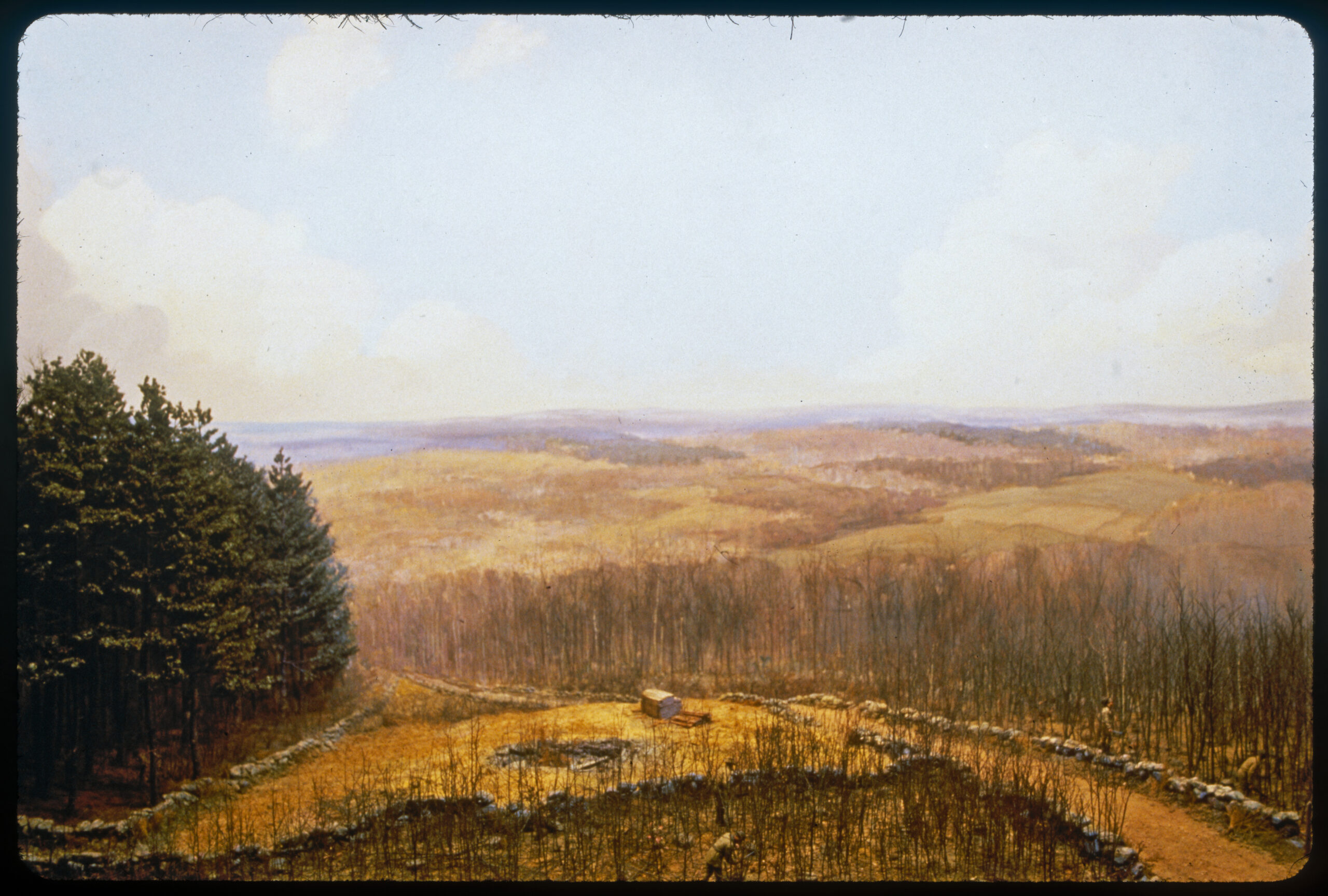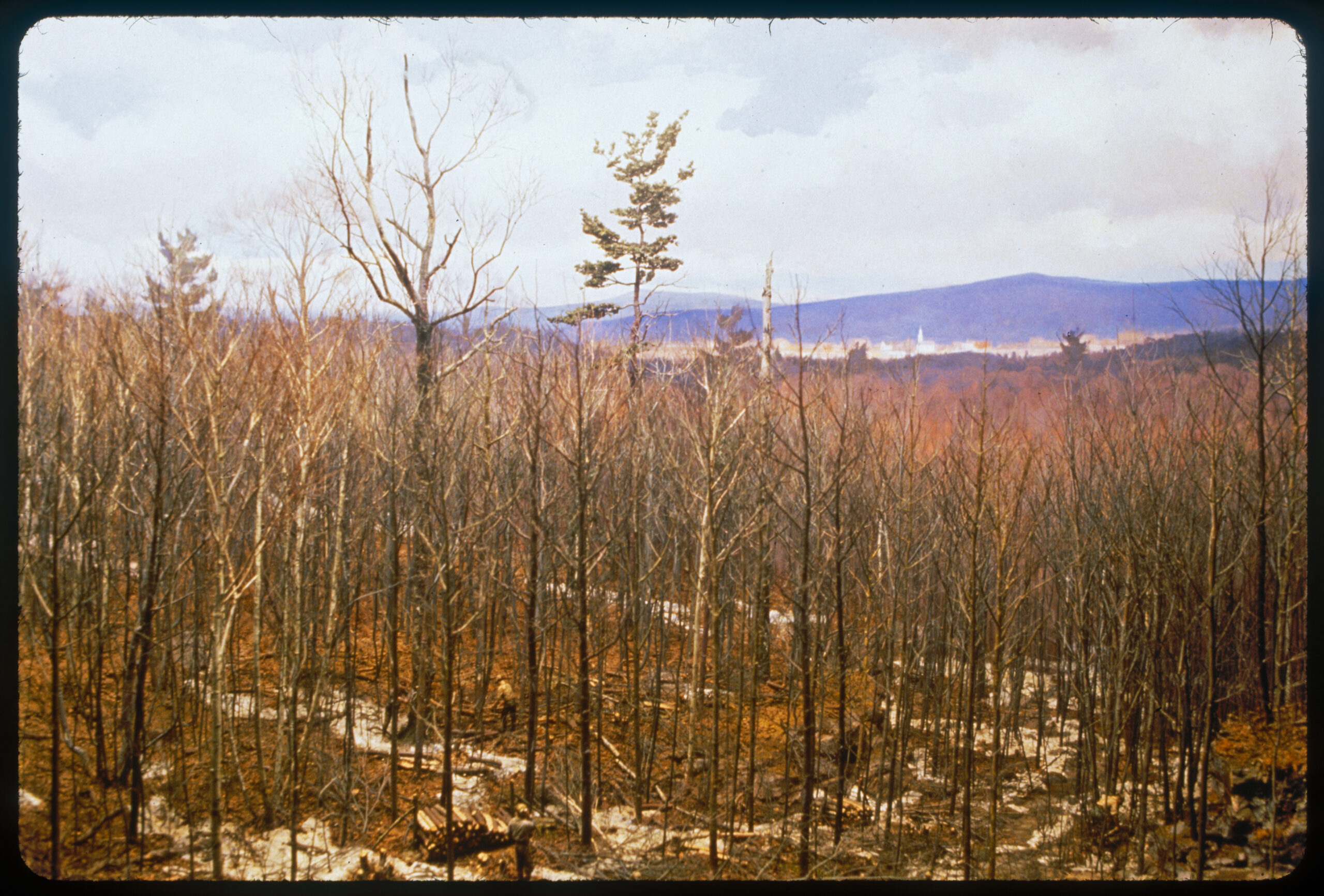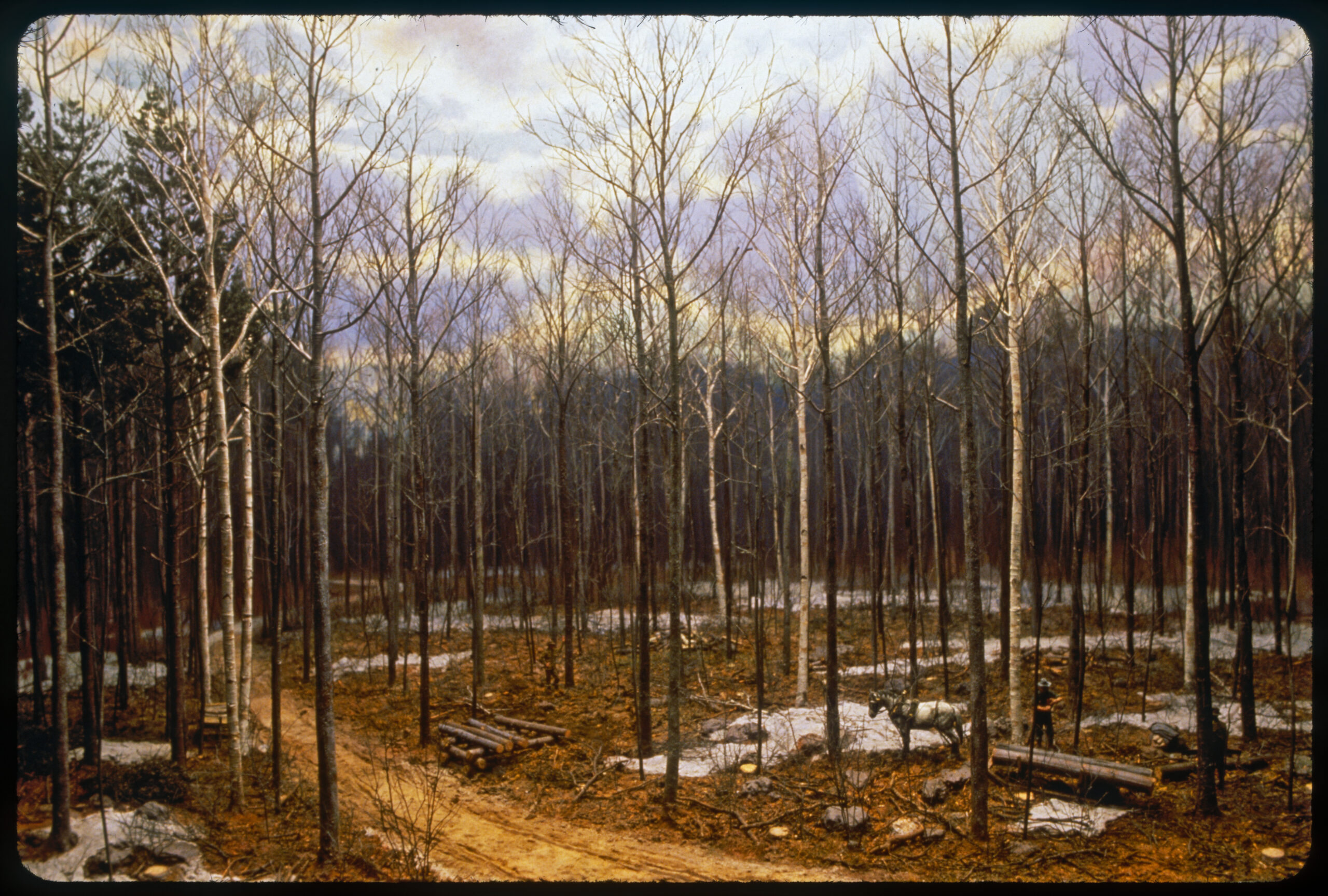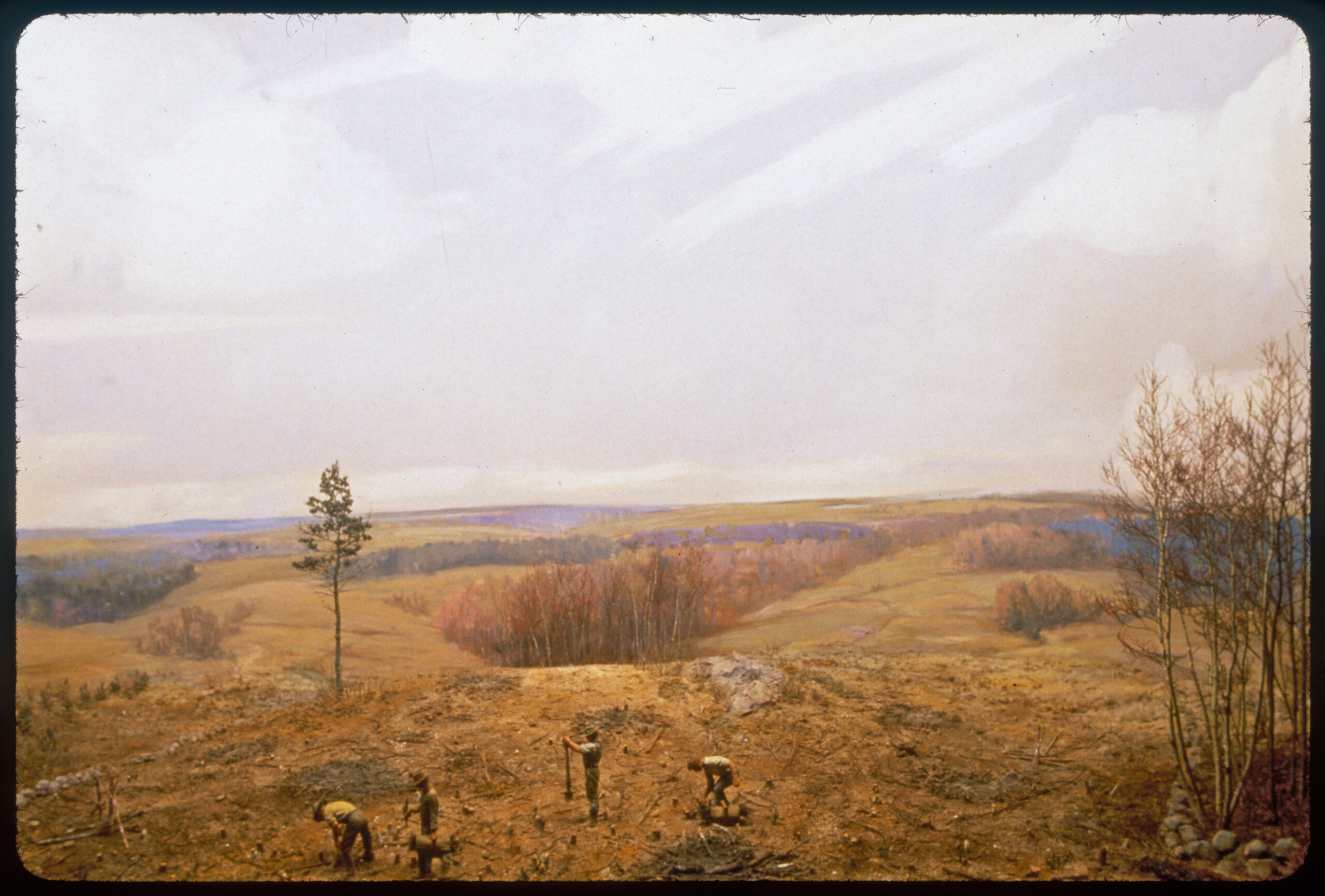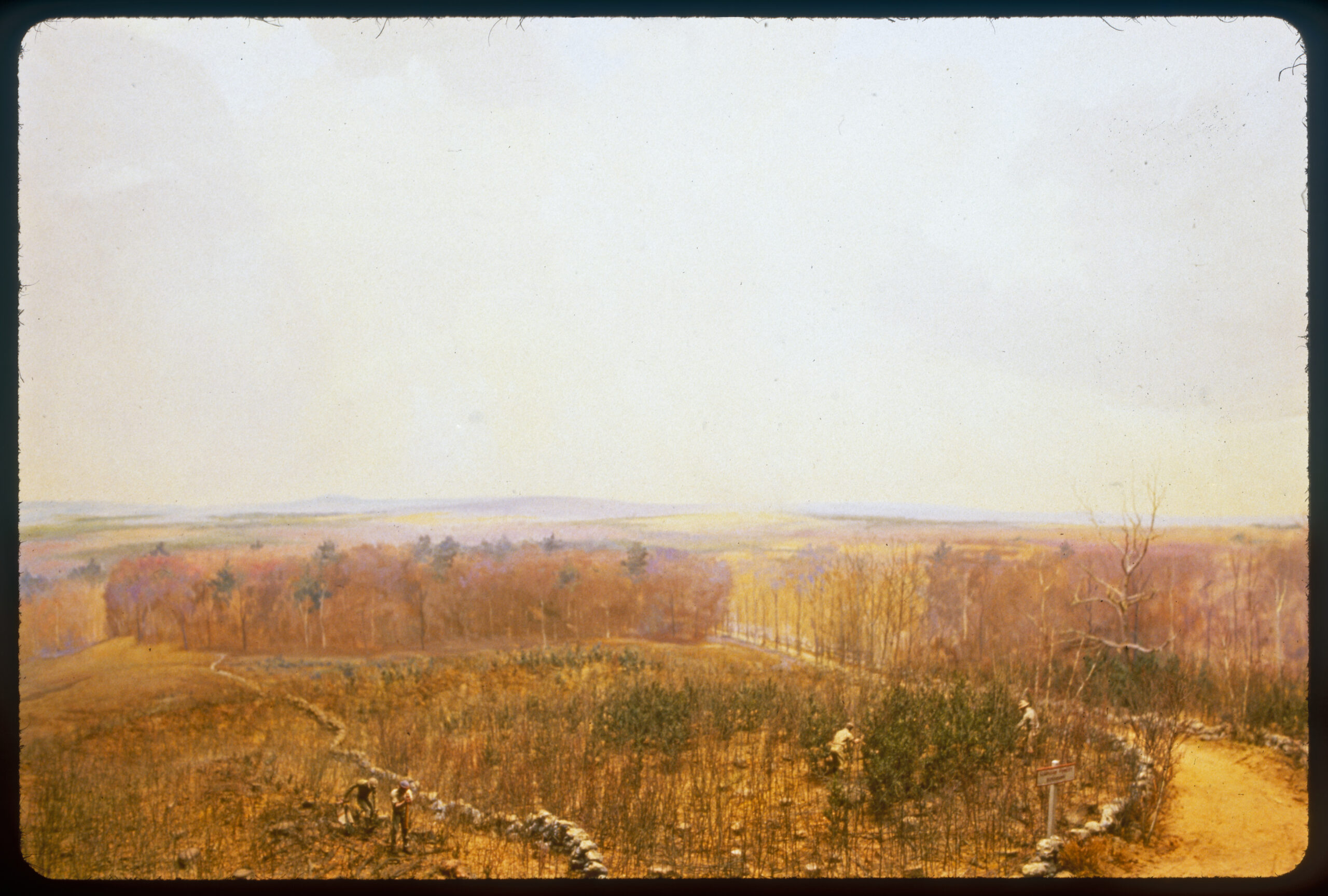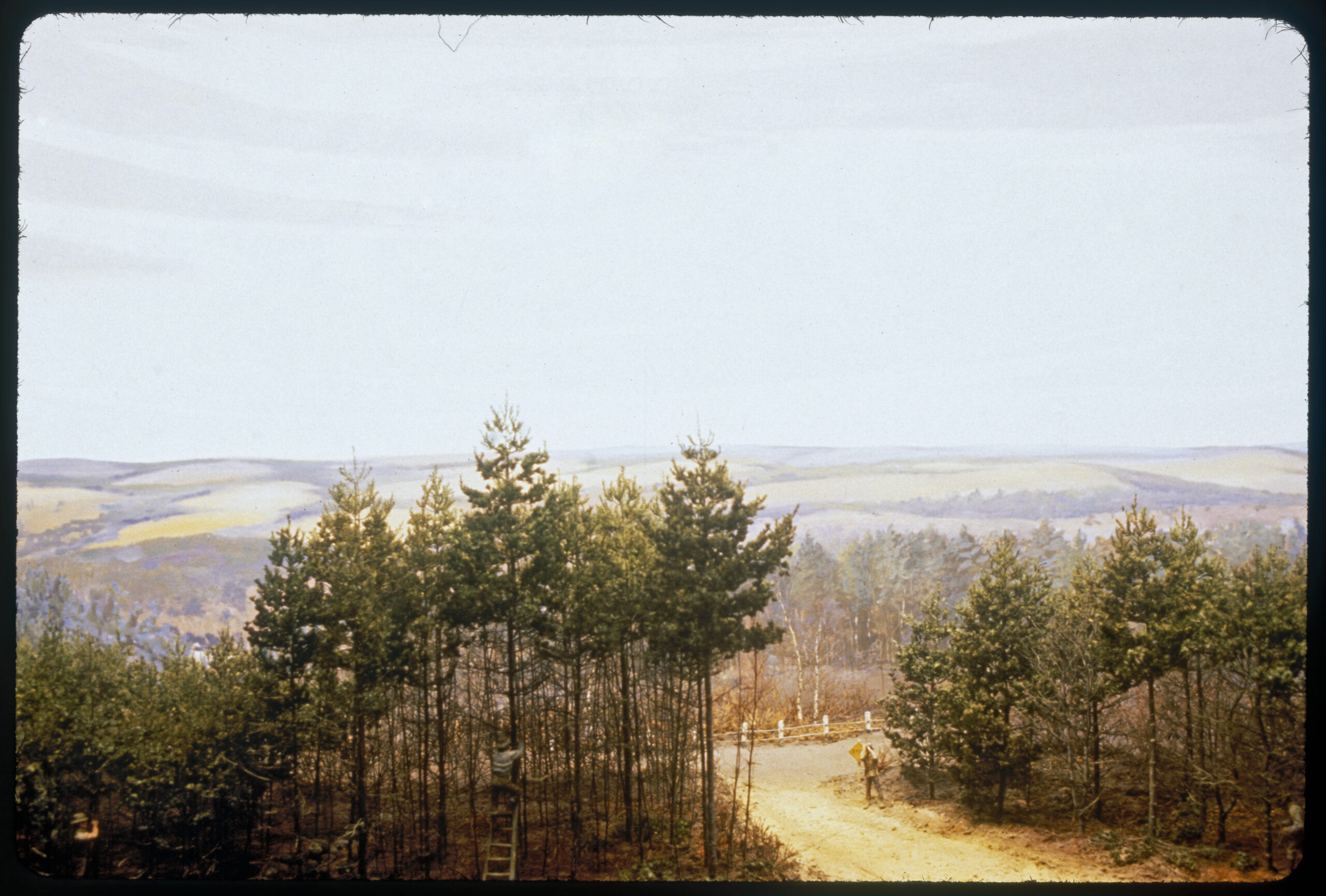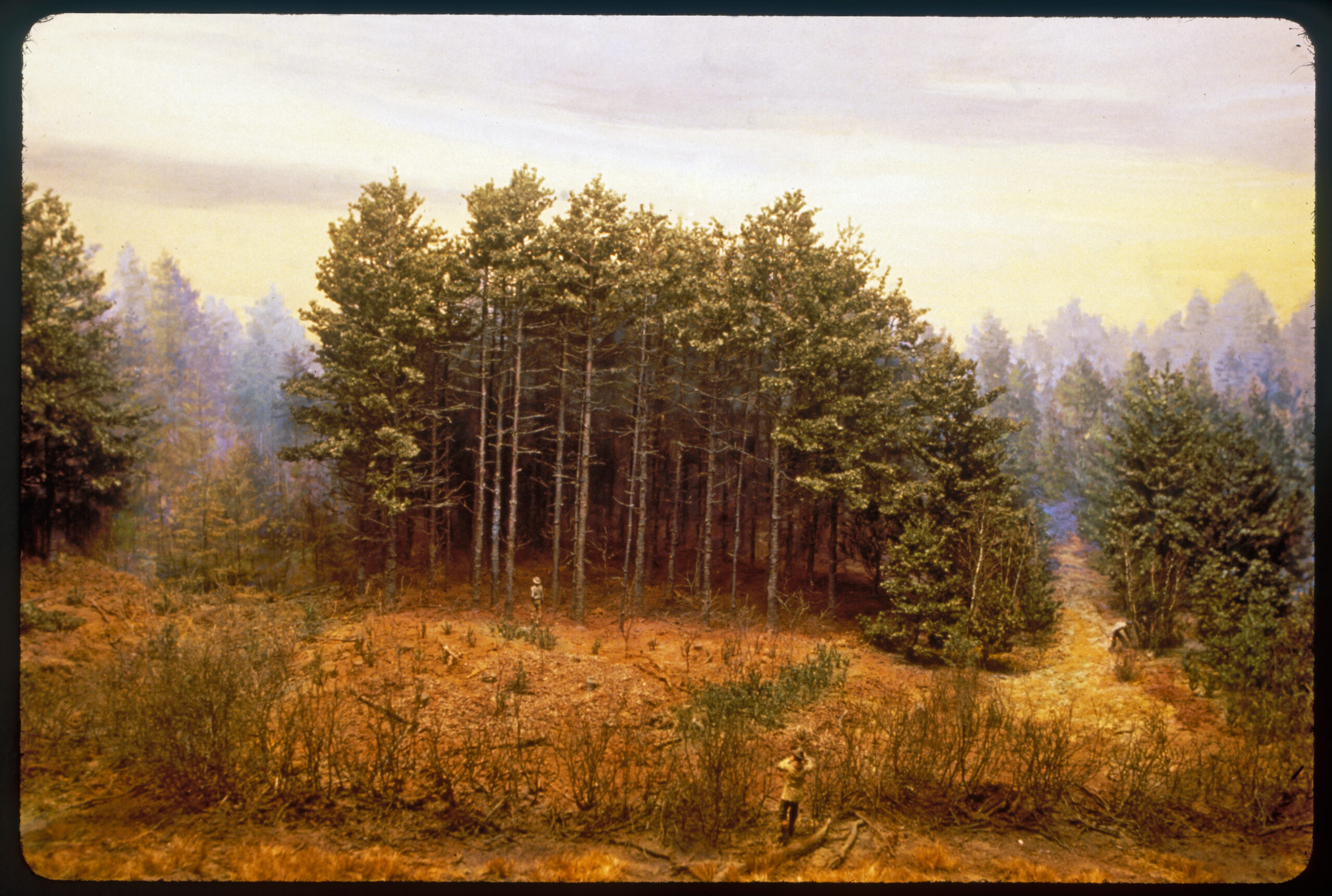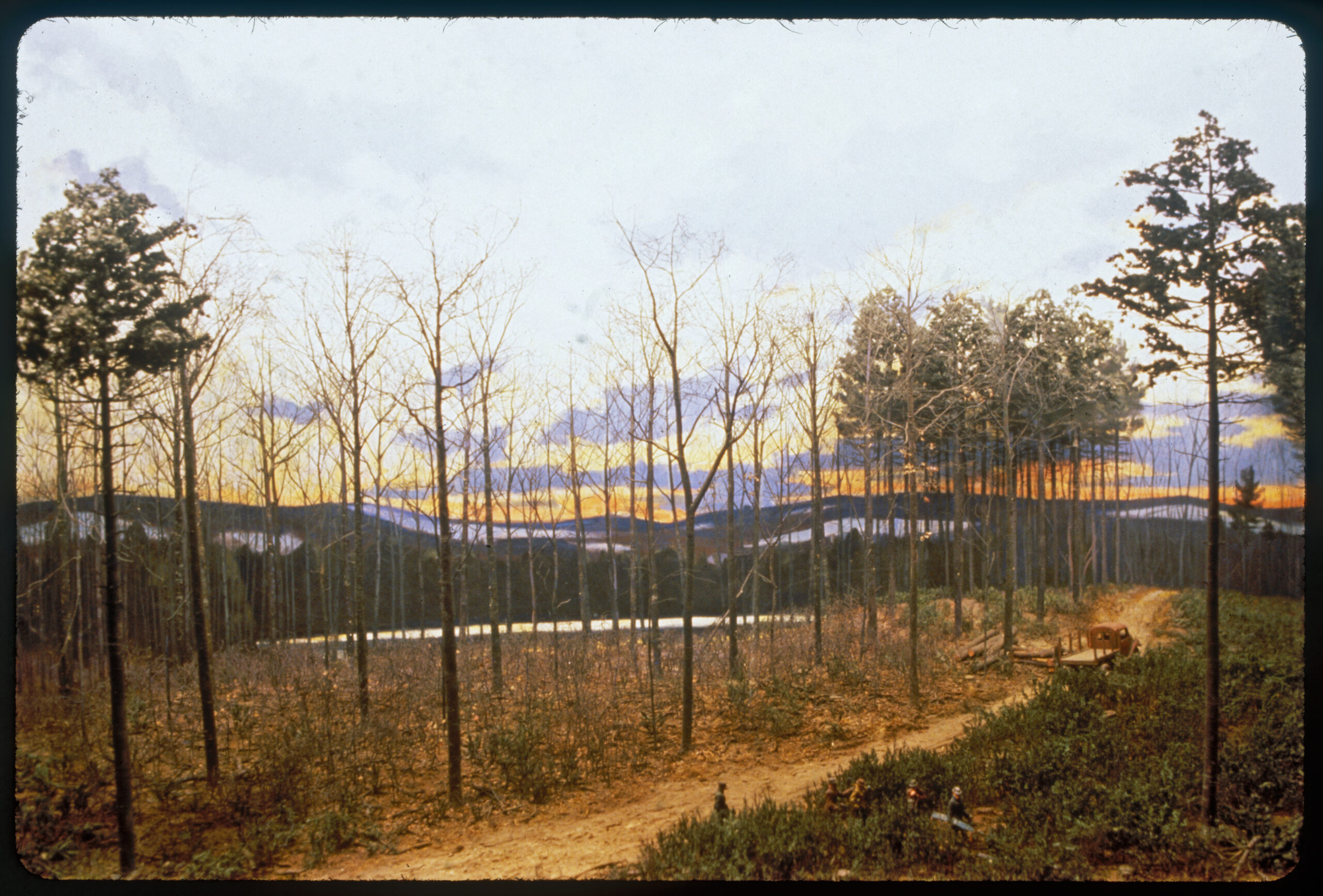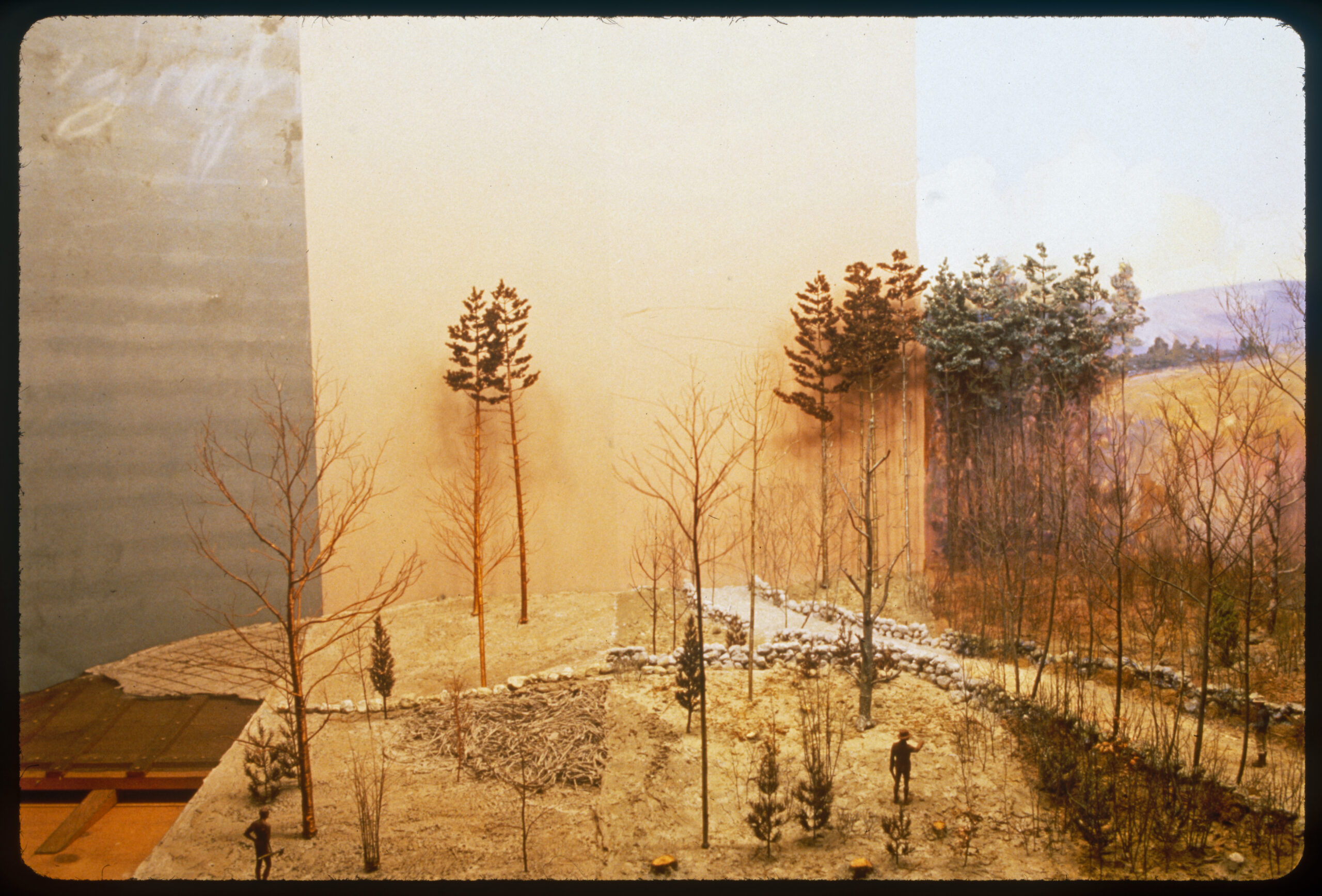The Harvard Forest Dioramas
The Fisher Museum's primary exhibit is 23 internationally acclaimed models (dioramas), the first seven of which depict 230 years of landscape change in central New England, beginning with European colonization in 1700. The remaining dioramas portray 20th-century forest management techniques and a series of conservation challenges including erosion and fire.
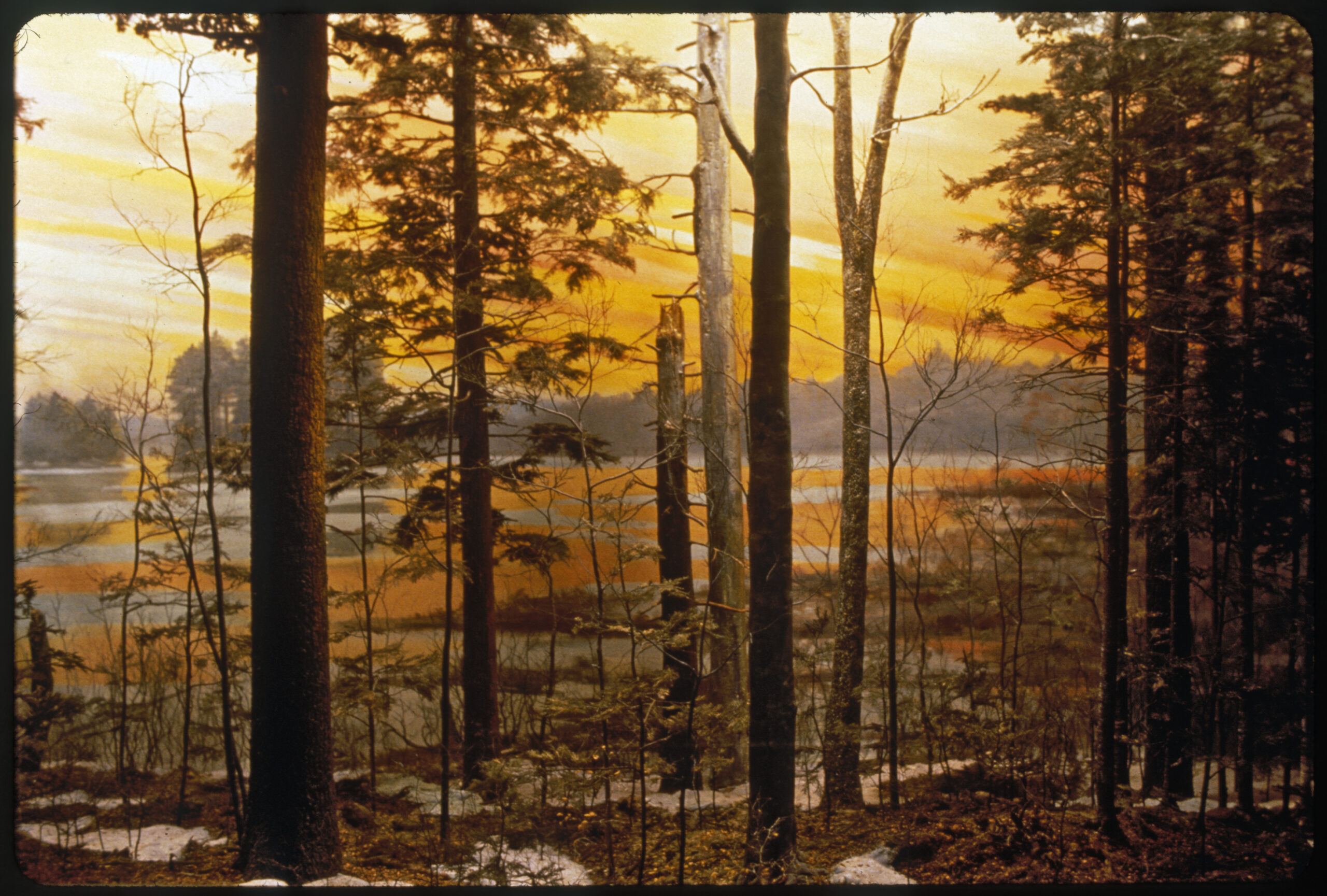
The Story in the Dioramas
Seven of the Harvard Forest dioramas form a historical series that depicts changes in the New England landscape over the past 300 years at one location. The scene was designed to depict all the important transformations of the landscape in the upland area of central Massachusetts since the pre-European-settlement period.
The ecological and historical interpretation of the details and significance of these transformations has changed little since Fisher and his colleagues designed the dioramas in the 1920s and 1930s. Importantly, the concepts presented in the dioramas provide the basis for much current understanding and research ecology, conservation biology, and forest management at the Harvard Forest and beyond.
One of the major lessons that emerges from the dioramas is that in order to understand our forests today we need to become deeply knowledgeable about their particular history. This historical perspective shows us that our forests have always been characterized by change and carry a strong cultural legacy of past human activity. This understanding should inform our predictions of future forest development, as well as our attempts to conserve and manage them.
Several dioramas highlight conservation issues in the New England countryside. These dioramas remind us of the history of conservation issues in eastern North America, and also point up the continuity of certain conservation concerns through time.
By coupling the forest history of New England to an understanding of the ecology of the region, the biology of forest trees, and society’s demands for natural resources, Richard Fisher developed a comprehensive approach to forest management that he and his students came to call “ecological forestry”. Because this approach was based on the study of natural stands and native species and attempted to work with the basic biology of forests in their natural landscape setting, it provides a clear precursor to the “new forestry” and “ecosystem management” approaches that have emerged in the late 20th century.
The artisans of the Guernsey and Pitman studio were justifiably proud of their creations and produced a final diorama documenting the techniques that they had developed to make the remarkably realistic models. Four sections from left to right illustrate initial construction through finished model.
The construction of the trees is most remarkable. Each small branch is represented by a thin strand of copper wire. These wires were brought together and wrapped around each other to form progressively larger branches and eventually the trunk. This technique captured both the unique branching pattern of the individual tree species and the correct proportions of the branches to the stem. To model pines, clusters of “needles” were etched from very thin sheets of copper and then soldered to the tips of the wire “branches.” Figures, animals, rocks, etc. were sculpted from a mixture of clay and wax.
The resulting dioramas represent an outstanding artistic and educational achievement.
